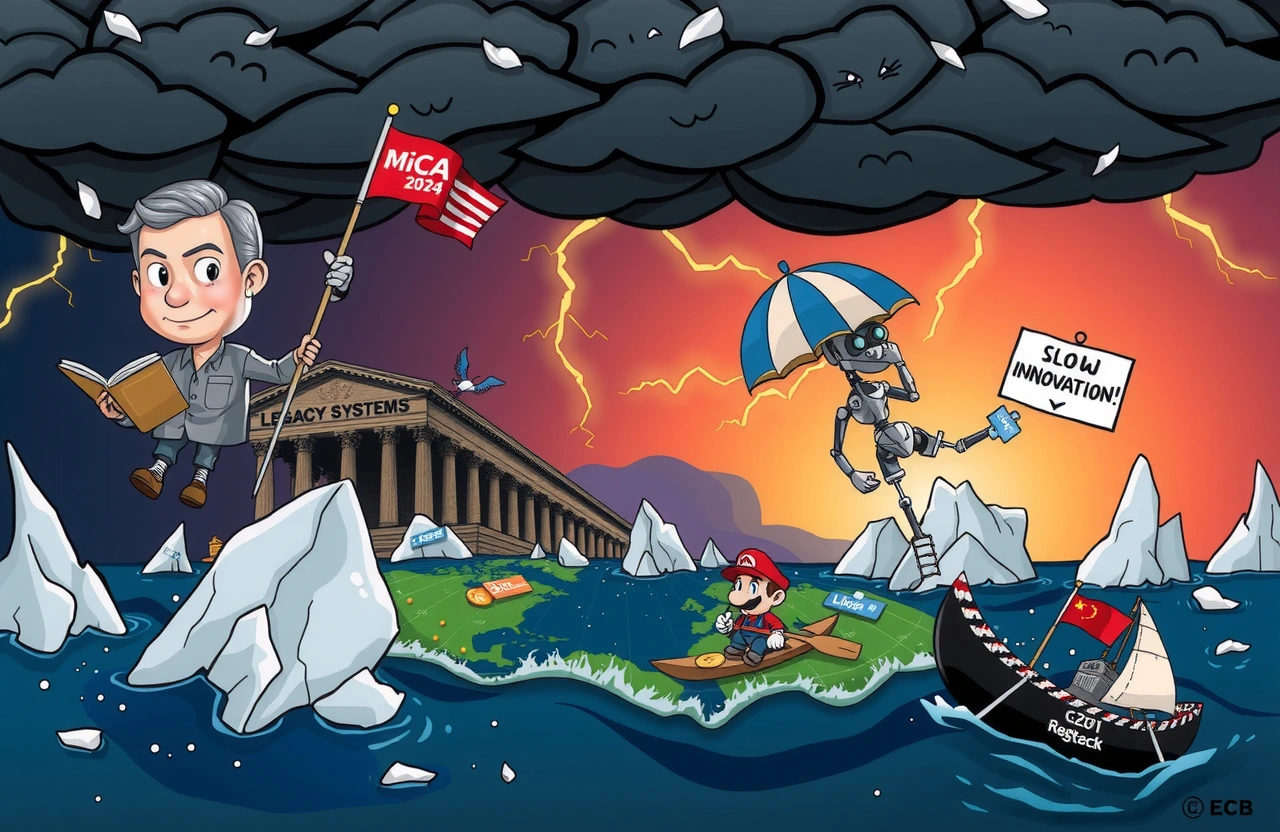The Gathering Storm: Why Financial Regulators Are on High Alert
A palpable tension hangs over financial markets as regulators scramble to respond to unprecedented challenges. Digital currencies rewrite payment systems, artificial intelligence revolutionizes risk modeling, and climate disasters expose trillion-dollar vulnerabilities—all while geopolitical fractures strain international cooperation. We stand at an inflection point where regulatory shifts will determine whether economies weather turbulence or face catastrophic failures. The uncertain horizon demands proactive solutions, not reactive patchwork.
Catalysts Igniting Regulatory Firestorms
Three converging forces accelerate regulatory overhauls. First, fintech innovation outraces oversight frameworks daily; decentralized finance platforms handle $100B in assets with minimal supervision. Second, climate risk disclosures reveal systemic threats—the IMF estimates 34.7% of banking losses derive from climate-exposed sectors by 2050. Third, escalating US-China tech decoupling fragments standards, complicating global market stability even as rapid regulatory shifts attempt local solutions.
Behind the Curve: The Cost of Delayed Action
Regulators struggle with legacy systems designed for 20th-century markets. Post-2008 reforms like Dodd-Frank addressed past crises yet prove inadequate for algorithmic trading or cybercrime. Consider SWIFT data showing cross-border fraud up 61% since 2020, exploiting regulatory gaps. As former ECB President Mario Draghi notes: “Banks now innovate faster than watchdogs can define perimeters.” Delayed responses escalate systemic risks exponentially.
Ground Zero: High-Impact Regulatory Battlegrounds
Certain sectors face transformative scrutiny as policymakers draft new rulebooks. These regulatory shifts prioritize containment and resilience.
Crypto and Digital Assets: The New Frontier
Cryptocurrency regulation dominates agendas after repeated exchange collapses erased over $2T in value. Key battlegrounds include:
– Classification debates: Are tokens securities or commodities?
– Custody requirements for digital wallets
– Stablecoin backing and redemption guarantees
– Anti-money laundering protocols for DeFi platforms
The EU’s landmark MiCA framework exemplifies proactive reshaping, mandating licensing and transparency starting 2024.
Climate Stress Tests: Banking’s New Reality
Financial institutions now undergo mandatory climate vulnerability assessments across 25 jurisdictions. Material dangers include:
– Stranded fossil fuel assets worth $1-4T
– Mortgage portfolios in flood-prone zones
– Supply chain finance disruptions
Regulators like the Bank of England enforce scenario analysis against up to 4°C warming, pressing banks to recalibrate lending portfolios amid these regulatory shifts.
The Coordination Crisis: When National Agendas Collide
Divergent regulatory tactics threaten market coherence as countries prioritize sovereignty over synchronization. This fragmentation erodes trust while raising compliance costs.
Data Dissonance in a Connected World
Conflicting privacy and AI governance rules stymie multinational firms. The EU’s GDPR penalizes data exports to nations without “adequate” standards, while China’s PIPL mandates local data storage. Compliance requires duplicative systems, increasing operational risks. Reports indicate 67% of banks spend over $10M annually navigating contradictory directives as regulatory shifts pull standards apart.
Trade Barriers: Unintended Regulatory Fallout
Green subsidy races illustrate how policy divergence escalates trade friction. The US Inflation Reduction Act’s $369B clean energy incentives sparked EU countermeasures like the Green Deal Industrial Plan—triggering WTO disputes. Such regulatory shifts towards economic nationalism could shrink global GDP growth by 1.4% annually, according to OECD projections.
Ripple Effects: Who Bears the Brunt?
As rules proliferate, unequal impacts emerge across market participants. Unintended consequences occasionally overshadow intended safeguards.
Financial firms report spending 15-20% of revenues on compliance—up 50% since 2017. Regional banks disproportionately struggle; a Federal Reserve study found it costs them 2.4x more per dollar than megabanks. Innovation also falters when 78% of fintechs cite regulatory uncertainty as their chief growth barrier in FIS surveys. Meanwhile, consumers face reduced market access, with 43% of low-income households unbanked in regions lacking proportionate regulations.
The World Bank confirms developing nations typically adopt rules designed for advanced economies, creating misfit burdens. One Kenyan microfinance CEO lamented: “Basel III capital rules meant for global giants could starve our small business lenders.”
Weathering the Storm: Adaptation Strategies
Proactive players invest in regulatory agility to navigate uncertainty. These approaches balance compliance with competitiveness.
RegTech: The Compliance Revolution
AI-powered tools allow real-time monitoring of regulatory shifts. Proven solutions include:
– NLP algorithms tracking 190+ regulators for rule changes
– Blockchain audit trails for transaction transparency
– Machine learning models predicting enforcement patterns
Early adopters reduce compliance costs by 30-50% while speeding response times.
Four Pillars for Future-Proof Governance
Leading institutions structure resilience around:
1. Scouting Divisions: Teams forecasting regulatory trends
2. Adaptive Frameworks: Modular internal policies updated quarterly
3. Scenario War Games: Simulating supervision crackdowns
4. Ethical AI Audits: Preempting bias in automated systems
Crucially, they participate in regulatory sandboxes like the UK FCA’s program to refine rules collaboratively.
Clearing Skies? Policy Pathways Forward
Sustainable solutions require acknowledging three realities: regulation must enable innovation, prevent fragmentation, and incorporate climate math. Forward-thinking regulators prototype “test and scale” models and embrace supranational standards bodies. The G20’s 2023 roadmap on crypto assets shows promise by harmonizing anti-fraud protocols. Regulatory shifts should be iterative rather than disruptive.
The tempo of change exceeds any single nation’s response capacity. International regulatory shifts demand unprecedented cooperation via forums like the Financial Stability Board. Stakeholders must pressure policymakers to prioritize scalable frameworks over reactionary patches. Subscribe to regulatory bulletins, join industry advocacy groups, and attend central bank consultations—the cost of silence could be catastrophic. What regulatory storms will break next? Only the prepared will survive intact.



